-
 Bitcoin
Bitcoin $118400
0.47% -
 Ethereum
Ethereum $3836
2.20% -
 XRP
XRP $3.157
2.98% -
 Tether USDt
Tether USDt $0.9999
-0.03% -
 BNB
BNB $801.5
1.31% -
 Solana
Solana $180.9
2.07% -
 USDC
USDC $0.9999
-0.02% -
 Dogecoin
Dogecoin $0.2225
2.50% -
 TRON
TRON $0.3285
-1.02% -
 Cardano
Cardano $0.7789
2.60% -
 Hyperliquid
Hyperliquid $43.60
2.39% -
 Sui
Sui $3.892
4.41% -
 Stellar
Stellar $0.4229
3.34% -
 Chainlink
Chainlink $18.01
3.98% -
 Hedera
Hedera $0.2745
6.77% -
 Bitcoin Cash
Bitcoin Cash $582.3
3.38% -
 Avalanche
Avalanche $23.77
1.04% -
 Ethena USDe
Ethena USDe $1.001
0.01% -
 Toncoin
Toncoin $3.493
3.59% -
 Litecoin
Litecoin $110.0
2.48% -
 UNUS SED LEO
UNUS SED LEO $8.936
-0.37% -
 Shiba Inu
Shiba Inu $0.00001304
2.49% -
 Uniswap
Uniswap $9.999
1.09% -
 Polkadot
Polkadot $3.897
3.26% -
 Monero
Monero $308.6
-0.83% -
 Dai
Dai $0.9999
-0.01% -
 Bitget Token
Bitget Token $4.504
-0.04% -
 Pepe
Pepe $0.00001154
2.95% -
 Cronos
Cronos $0.1471
3.06% -
 Ethena
Ethena $0.6691
19.53%
Warning method of changing the market when the cross star appears at the end of the trend
The cross star pattern signals potential trend reversals in crypto markets, especially when confirmed by volume, RSI divergence, and MACD crossovers.
Jul 30, 2025 at 08:57 am
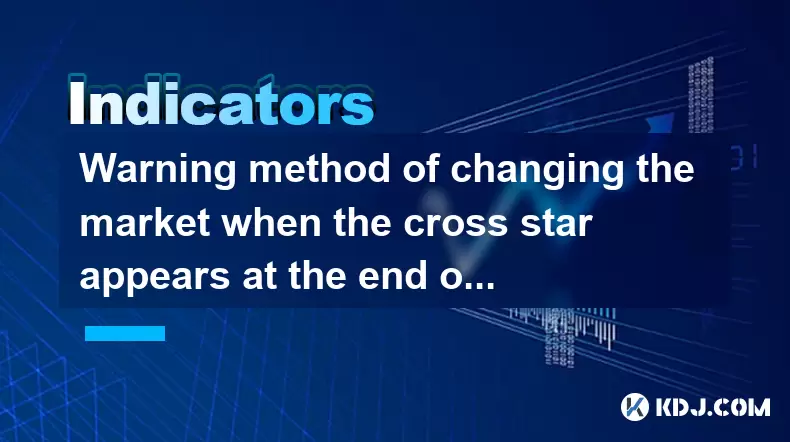
Understanding the Cross Star Pattern in Cryptocurrency Trading
The cross star pattern is a significant candlestick formation that traders use to identify potential reversals in market trends. It typically appears when the opening and closing prices are nearly identical, resulting in a small body with long upper and lower shadows. This pattern suggests indecision between buyers and sellers, especially when it forms after a prolonged uptrend or downtrend. In the context of cryptocurrency markets, which are highly volatile and sentiment-driven, the appearance of a cross star at the end of a trend can serve as a warning signal that momentum is weakening.
When analyzing this pattern, it’s essential to pay attention to the volume accompanying the cross star. A high trading volume during its formation increases the reliability of the signal. For instance, if Bitcoin has been in a strong upward movement and suddenly forms a cross star with significantly higher volume on a 4-hour chart, it may indicate that large traders are taking profits or preparing for a reversal.
Identifying the Cross Star at Trend Termination Points
To detect a valid cross star at the end of a trend, traders must first confirm the existing trend direction. This can be done using tools such as moving averages, trendlines, or the Relative Strength Index (RSI). Once a clear trend is established—either bullish or bearish—the next step is to scan for candlestick patterns that suggest exhaustion.
The cross star must appear after a series of consecutive green (bullish) candles in an uptrend or red (bearish) candles in a downtrend. The key characteristics to verify include:
- The open and close prices are almost equal, forming a tiny real body.
- There are long upper and lower wicks, indicating price rejection at both high and low levels.
- The pattern occurs at a key resistance or support level, enhancing its significance.
For example, on the Binance BTC/USDT chart, if a cross star forms near a historical resistance zone like $65,000 after a rally, it strengthens the case for a potential reversal. Traders should avoid acting on isolated cross stars without confirmation from other technical indicators.
Confirming the Reversal Signal with Additional Indicators
A single cross star is not sufficient to justify a trade. Confirmation is required to reduce false signals. One effective method is to wait for the next candle to close after the cross star. If the following candle is a strong bearish candle in an uptrend, or a bullish candle in a downtrend, it confirms the reversal.
Additional confirmation tools include:
- MACD (Moving Average Convergence Divergence): A bearish crossover after an uptrend aligns with a cross star increases reversal probability.
- RSI divergence: If price makes a higher high but RSI makes a lower high, it indicates weakening momentum.
- Volume profile: A spike in volume during the cross star and the next candle supports the validity of the signal.
For instance, if Ethereum shows a cross star at $3,800 with RSI above 70 and MACD lines crossing downward, the combined signals suggest a high likelihood of a pullback. Traders can use this confluence to prepare for a short entry or exit long positions.
Setting Up Alerts for Cross Star Detection
To act promptly when a cross star appears, traders can set up automated alerts on trading platforms. On TradingView, this can be achieved using Pine Script to create a custom alert condition. Below is a sample script snippet:
// Detect Cross Star
bodySize = abs(close - open)
upperWick = high - math.max(open, close)
lowerWick = math.min(open, close) - low
isCrossStar = bodySize <= (high - low) 0.1 and upperWick > bodySize 3 and lowerWick > bodySize * 3alertcondition(isCrossStar, title="Cross Star Detected", message="Cross star formed on {{interval}} timeframe")
To implement this:
- Open TradingView and navigate to the Pine Editor.
- Paste the code into a new script.
- Save and add the indicator to your chart.
- Click on the "Alerts" button and set up a notification when "Cross Star Detected" triggers.
This ensures you receive real-time notifications via email, SMS, or app push, allowing timely analysis. You can further refine the script to only trigger during confirmed trends by incorporating slope detection of a 50-period EMA.
Risk Management and Trade Execution Strategy
Even with a confirmed cross star, risk must be managed carefully. Cryptocurrency markets are prone to whipsaws, and false signals occur frequently. A proper strategy includes:
- Placing a stop-loss order above the high of the cross star in a bearish setup, or below the low in a bullish reversal.
- Using a risk-reward ratio of at least 1:2 to ensure profitability over time.
- Limiting position size to 1–2% of total capital per trade.
For a short entry after a cross star in an uptrend:
- Enter when the next candle closes below the low of the cross star.
- Set stop-loss at the high of the cross star.
- Target the nearest support level, such as a previous swing low or Fibonacci retracement level (e.g., 61.8%).
Traders using Binance Futures can set these parameters directly in the order interface. Enable "Post-Only" to avoid paying taker fees and use "Reduce-Only" to prevent unintended position increases.
Backtesting the Cross Star Strategy on Historical Data
Before deploying the strategy live, backtesting on historical data is crucial. On TradingView, load a cryptocurrency pair like BTC/USDT and switch to bar replay mode. Manually scan for cross star patterns at trend ends and simulate entries and exits.
Steps for effective backtesting:
- Select a timeframe (e.g., 4-hour) and a historical period (e.g., 2022–2024).
- Mark every cross star that meets the defined criteria.
- Record the outcome of each trade based on the confirmation rules.
- Calculate win rate, average gain, and maximum drawdown.
Alternatively, use Python with libraries like pandas and mplfinance to automate detection and performance analysis. This helps quantify the strategy’s edge and refine entry conditions.
Frequently Asked Questions
What is the difference between a cross star and a doji?
The cross star is a type of doji where the opening and closing prices are nearly identical, but it specifically features long upper and lower wicks, indicating strong rejection at both ends. While all cross stars are dojis, not all dojis are cross stars—some may have short shadows and less significance.
Can the cross star pattern appear in sideways markets?
Yes, the cross star can form during consolidation phases. However, its reversal significance is weaker in ranging markets because indecision is already expected. The pattern carries more weight when it appears after a clear directional trend.
How long should I wait for confirmation after a cross star?
Wait for the completion of the next candle. For example, on a 4-hour chart, allow the full 4 hours to pass after the cross star forms. Acting prematurely may lead to entering a false reversal.
Does the cross star work on all cryptocurrencies?
The pattern can appear on any cryptocurrency chart, but it is more reliable on major assets like Bitcoin and Ethereum due to higher liquidity and clearer price action. Low-cap altcoins with erratic volume may produce misleading signals.
Disclaimer:info@kdj.com
The information provided is not trading advice. kdj.com does not assume any responsibility for any investments made based on the information provided in this article. Cryptocurrencies are highly volatile and it is highly recommended that you invest with caution after thorough research!
If you believe that the content used on this website infringes your copyright, please contact us immediately (info@kdj.com) and we will delete it promptly.
- Ozak AI: Can This Underdog Crypto Achieve a Bull Run to $1?
- 2025-07-31 22:30:12
- Coinbase Breach: Navigating Insider Risk and Bolstering Security
- 2025-07-31 23:11:55
- Bitcoin Rebounds, WeWake Presale Gains Traction: What's the Buzz?
- 2025-07-31 22:30:12
- Bitcoin, Altcoins, and Volume Watchlists: Decoding the Crypto Landscape
- 2025-07-31 23:11:55
- Tron, Fartcoin, and BlockchainFX: What's Trending (and What's Not) in the Crypto World
- 2025-07-31 21:32:19
- Bitcoin, Corporate Investments, and Sustainability: A New Era or Fleeting Fad?
- 2025-07-31 20:50:14
Related knowledge

How can you use the MACD histogram to determine trend strength?
Jul 31,2025 at 11:10pm
Understanding the MACD Histogram and Its ComponentsThe MACD (Moving Average Convergence Divergence) histogram is a visual representation of the differ...
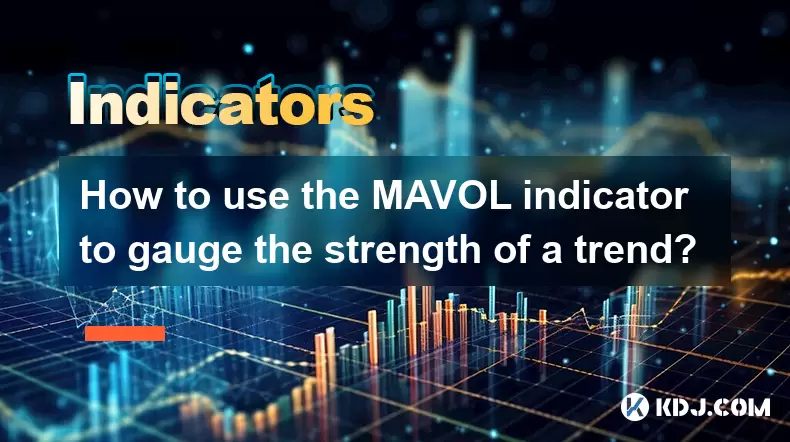
How to use the MAVOL indicator to gauge the strength of a trend?
Jul 31,2025 at 09:57pm
Understanding the MAVOL Indicator in Cryptocurrency TradingThe MAVOL indicator, short for Moving Average of Volume, is a technical analysis tool widel...
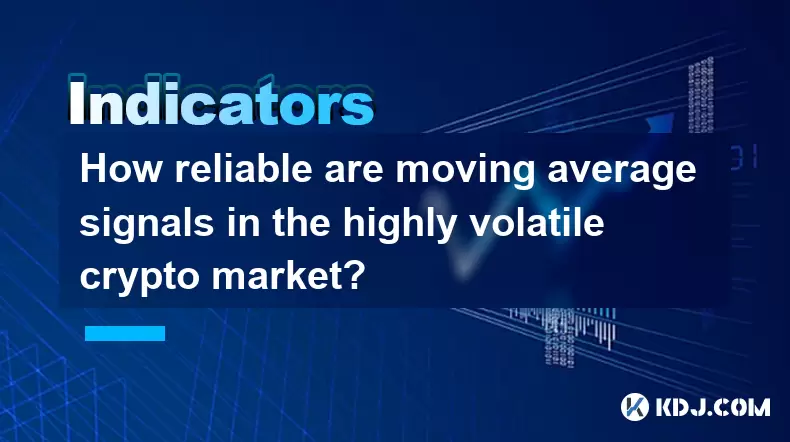
How reliable are moving average signals in the highly volatile crypto market?
Jul 31,2025 at 08:36pm
Understanding Moving Averages in Cryptocurrency TradingMoving averages (MAs) are among the most widely used technical indicators in the cryptocurrency...
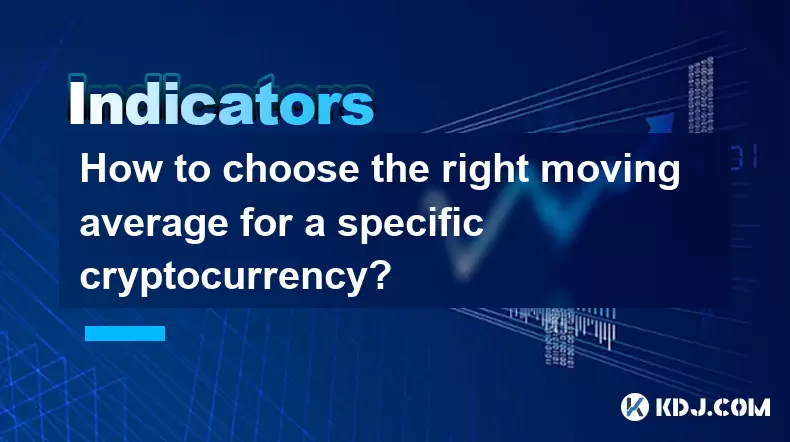
How to choose the right moving average for a specific cryptocurrency?
Jul 31,2025 at 10:29pm
Understanding the Role of Moving Averages in Cryptocurrency TradingMoving averages are foundational tools in technical analysis, widely used by crypto...
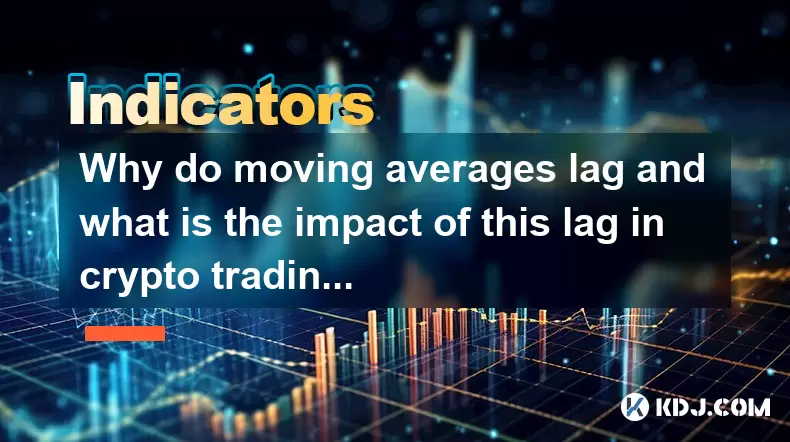
Why do moving averages lag and what is the impact of this lag in crypto trading?
Jul 31,2025 at 08:07pm
Understanding the Concept of Moving Averages in Crypto TradingMoving averages are among the most widely used technical indicators in cryptocurrency tr...
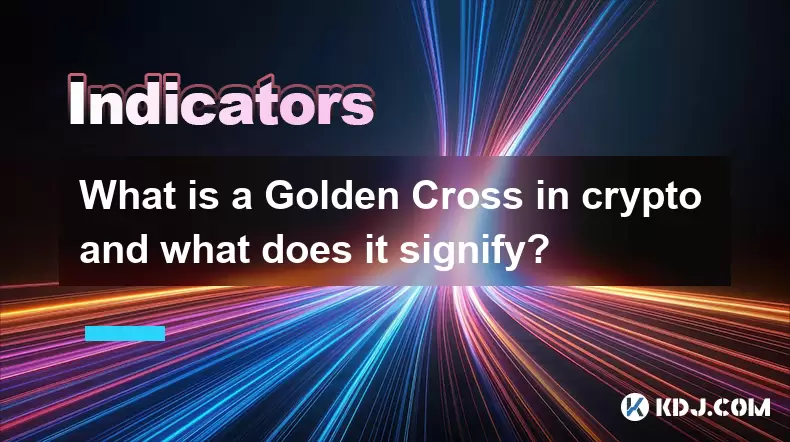
What is a Golden Cross in crypto and what does it signify?
Jul 31,2025 at 10:36pm
Understanding the Golden Cross in Cryptocurrency MarketsThe Golden Cross is a technical analysis pattern widely observed in cryptocurrency trading. It...

How can you use the MACD histogram to determine trend strength?
Jul 31,2025 at 11:10pm
Understanding the MACD Histogram and Its ComponentsThe MACD (Moving Average Convergence Divergence) histogram is a visual representation of the differ...

How to use the MAVOL indicator to gauge the strength of a trend?
Jul 31,2025 at 09:57pm
Understanding the MAVOL Indicator in Cryptocurrency TradingThe MAVOL indicator, short for Moving Average of Volume, is a technical analysis tool widel...

How reliable are moving average signals in the highly volatile crypto market?
Jul 31,2025 at 08:36pm
Understanding Moving Averages in Cryptocurrency TradingMoving averages (MAs) are among the most widely used technical indicators in the cryptocurrency...

How to choose the right moving average for a specific cryptocurrency?
Jul 31,2025 at 10:29pm
Understanding the Role of Moving Averages in Cryptocurrency TradingMoving averages are foundational tools in technical analysis, widely used by crypto...

Why do moving averages lag and what is the impact of this lag in crypto trading?
Jul 31,2025 at 08:07pm
Understanding the Concept of Moving Averages in Crypto TradingMoving averages are among the most widely used technical indicators in cryptocurrency tr...

What is a Golden Cross in crypto and what does it signify?
Jul 31,2025 at 10:36pm
Understanding the Golden Cross in Cryptocurrency MarketsThe Golden Cross is a technical analysis pattern widely observed in cryptocurrency trading. It...
See all articles

























































































